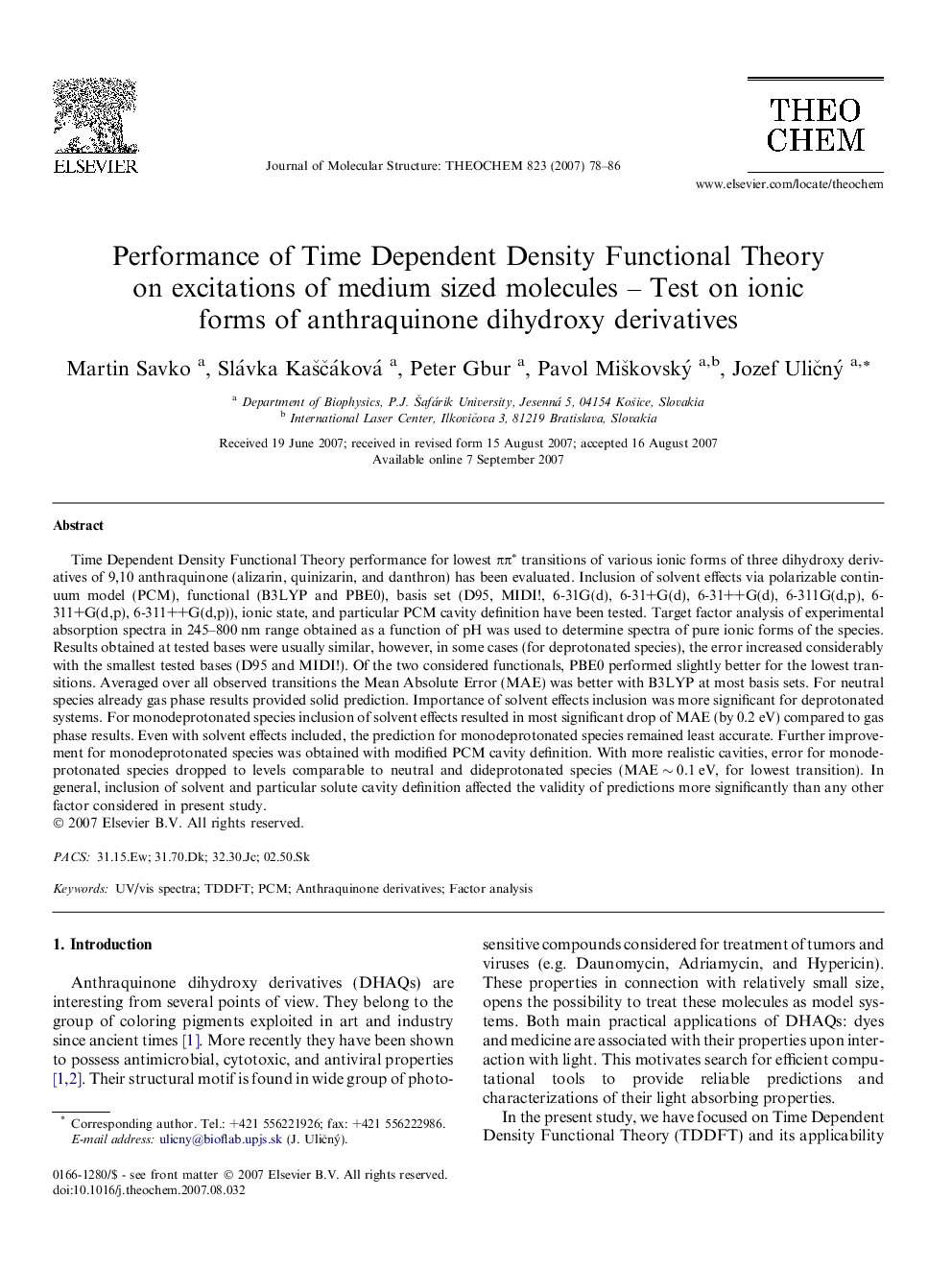| Article ID | Journal | Published Year | Pages | File Type |
|---|---|---|---|---|
| 5418362 | Journal of Molecular Structure: THEOCHEM | 2007 | 9 Pages |
Abstract
Time Dependent Density Functional Theory performance for lowest ÏÏâ transitions of various ionic forms of three dihydroxy derivatives of 9,10 anthraquinone (alizarin, quinizarin, and danthron) has been evaluated. Inclusion of solvent effects via polarizable continuum model (PCM), functional (B3LYP and PBE0), basis set (D95, MIDI!, 6-31G(d), 6-31+G(d), 6-31++G(d), 6-311G(d,p), 6-311+G(d,p), 6-311++G(d,p)), ionic state, and particular PCM cavity definition have been tested. Target factor analysis of experimental absorption spectra in 245-800 nm range obtained as a function of pH was used to determine spectra of pure ionic forms of the species. Results obtained at tested bases were usually similar, however, in some cases (for deprotonated species), the error increased considerably with the smallest tested bases (D95 and MIDI!). Of the two considered functionals, PBE0 performed slightly better for the lowest transitions. Averaged over all observed transitions the Mean Absolute Error (MAE) was better with B3LYP at most basis sets. For neutral species already gas phase results provided solid prediction. Importance of solvent effects inclusion was more significant for deprotonated systems. For monodeprotonated species inclusion of solvent effects resulted in most significant drop of MAE (by 0.2 eV) compared to gas phase results. Even with solvent effects included, the prediction for monodeprotonated species remained least accurate. Further improvement for monodeprotonated species was obtained with modified PCM cavity definition. With more realistic cavities, error for monodeprotonated species dropped to levels comparable to neutral and dideprotonated species (MAE â¼Â 0.1 eV, for lowest transition). In general, inclusion of solvent and particular solute cavity definition affected the validity of predictions more significantly than any other factor considered in present study.
Keywords
Related Topics
Physical Sciences and Engineering
Chemistry
Physical and Theoretical Chemistry
Authors
Martin Savko, Slávka KaÅ¡Äáková, Peter Gbur, Pavol MiÅ¡kovský, Jozef UliÄný,
